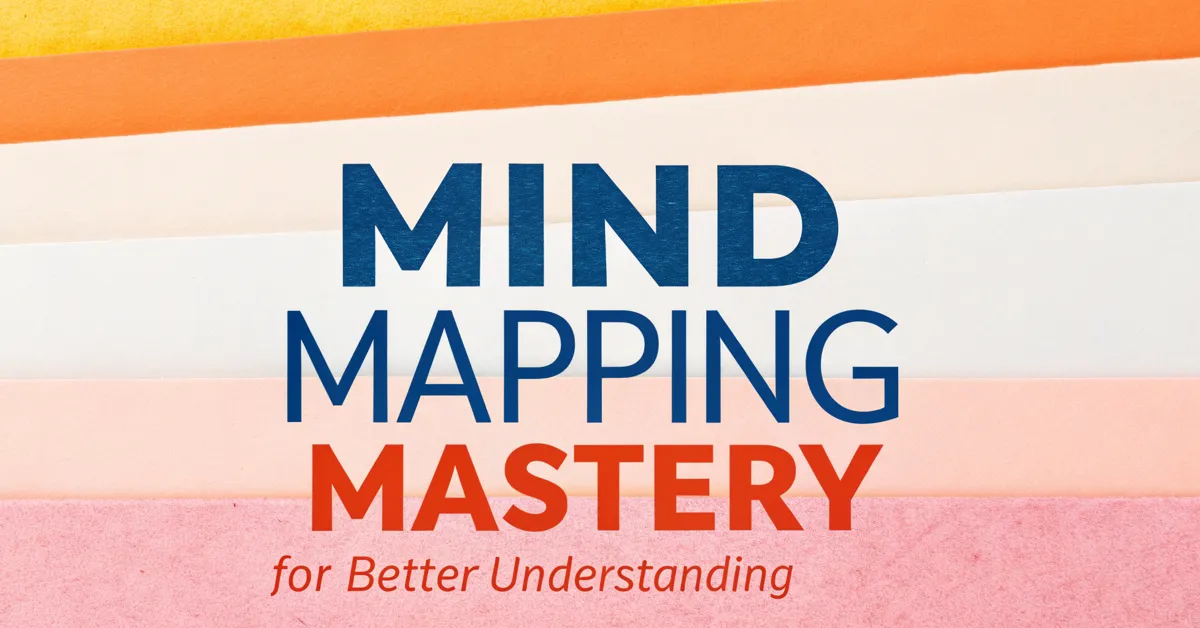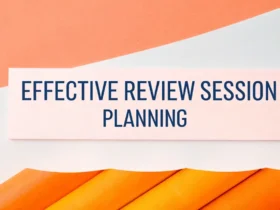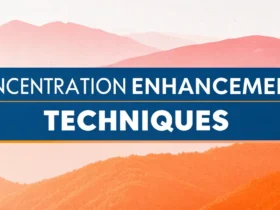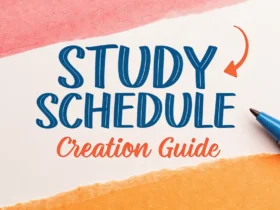Is your mind a tangled mess of thoughts? Do ideas flit away like butterflies before you can grasp them? You’re not alone. Many students face the challenge of organizing information and truly understanding complex topics. But what if there was a way to visually capture, connect, and conquer your learning?
That’s where mind mapping comes in. It’s a powerful technique that can transform how you learn, remember, and create. This article will give you the tools to become a mind mapping master. You will learn how to use this skill to boost your understanding and ace your studies.
What Is Mind Mapping?
Think of a mind map as a visual representation of your thoughts. It starts with a central idea or topic, and then branches out into related concepts, subtopics, and details. It mimics the way our brains naturally make connections. Instead of linear notes, mind mapping uses keywords, images, colors, and spatial arrangement to create a dynamic and memorable overview of a subject.
Why Is Mind Mapping Effective?
Traditional note-taking can feel like transcribing. You write down what you hear or read in a straight line. This can be a passive process. Mind mapping, on the other hand, is an active, engaging technique that offers several key benefits:
-
Improved Comprehension: Mind maps help you break down complex information into smaller, more manageable chunks. This makes it easier to understand the relationships between different ideas and concepts.
-
Enhanced Memory: The visual nature of mind maps makes them more memorable than linear notes. The use of images, colors, and spatial arrangement helps you create stronger associations and recall information more easily.
-
Increased Creativity: Mind mapping encourages brainstorming and the generation of new ideas. The free-flowing structure of mind maps allows you to explore different avenues of thought and make connections you might not have otherwise considered.
-
Better Organization: Mind maps provide a clear and concise overview of a topic. This helps you organize your thoughts, identify key concepts, and see the big picture.
-
Greater Focus: The active nature of mind mapping keeps you engaged and focused on the task at hand. It reduces distractions and promotes deeper learning.
Data backs this up. Studies have shown that mind mapping can improve memory recall by up to 15% compared to traditional note-taking methods (Source: “The Mind Map Book” by Tony Buzan and Barry Buzan).
The Core Elements of a Mind Map
A mind map is more than just a diagram. It is a system of visual communication. To build your own, understand its key elements. Here is a look at the structure.
-
Central Topic: The core idea, problem, or subject that the mind map revolves around. It’s usually placed in the center of the page and clearly identified.
-
Branches: Lines that extend from the central topic to connect related ideas and subtopics. Branches represent the associations and relationships between different concepts.
-
Keywords: Short, concise words or phrases that capture the essence of each idea or subtopic. Keywords are preferred over long sentences to maximize clarity and impact.
-
Images: Visual representations of ideas or concepts. Images can be drawings, symbols, icons, or even small pictures. They add a visual element to the mind map and make it more memorable.
-
Colors: Used to differentiate branches, highlight important information, and create visual appeal. Colors can help you organize and categorize ideas, as well as make the mind map more engaging.
-
Spatial Arrangement: The way ideas and subtopics are arranged around the central topic. Spatial arrangement can be used to show relationships, hierarchies, and priorities.
Step-by-Step Guide to Creating Effective Mind Maps
Now that you know the what and why, let’s dive into the how. Here’s a step-by-step guide to creating mind maps that will revolutionize your learning:
1. Start with a Central Topic
Begin by writing or drawing your central topic in the middle of a blank page or digital canvas. Make it clear, concise, and easily identifiable. This is the foundation of your mind map.
2. Add Main Branches
Identify the main subtopics or key ideas related to your central topic. Draw branches extending from the central topic to represent each of these main ideas. Label each branch with a relevant keyword or phrase.
3. Expand with Sub-Branches
For each main branch, identify further subtopics or details that support or explain the main idea. Draw smaller branches extending from the main branches to represent these subtopics. Label each sub-branch with a relevant keyword or phrase.
4. Use Keywords and Images
Use keywords rather than full sentences to capture the essence of each idea. Add images or symbols to represent concepts visually and make the mind map more memorable.
5. Employ Colors and Spatial Arrangement
Use different colors to differentiate branches and highlight important information. Arrange the branches and sub-branches in a way that makes sense to you and clearly shows the relationships between different ideas.
6. Revise and Refine
Once you’ve created your initial mind map, take some time to revise and refine it. Add or remove branches, adjust the spatial arrangement, and clarify any unclear keywords or images. The goal is to create a mind map that is both informative and visually appealing.
Practical Applications of Mind Mapping for Students
Mind mapping isn’t just a theoretical concept. It can be applied to a wide range of academic tasks. Here are some practical applications of mind mapping for students:
-
Note-Taking: Replace linear note-taking with mind mapping during lectures or readings. Capture key concepts, relationships, and examples in a visual format that’s easier to remember and understand.
-
Brainstorming: Use mind mapping to generate ideas for essays, research papers, or creative projects. Start with a central topic and then branch out into related ideas, themes, and arguments.
-
Essay Planning: Plan the structure and content of your essays using mind maps. Identify the main arguments, supporting evidence, and logical flow of your essay in a visual format that’s easy to follow.
-
Exam Revision: Create mind maps to summarize and review key concepts for exams. Condense large amounts of information into a visual overview that helps you identify important themes and relationships.
-
Problem-Solving: Use mind mapping to analyze complex problems and generate potential solutions. Break down the problem into smaller parts, identify the root causes, and then brainstorm possible solutions.
Choosing the Right Mind Mapping Tools
While you can create mind maps using pen and paper, there are also many digital mind mapping tools available that offer additional features and benefits.
- Software: Programs like MindManager, XMind, and iMindMap offer a wide range of features, including customizable templates, image libraries, and collaboration tools.
- Web-Based Applications: Tools like MindMeister, Coggle, and Miro allow you to create and share mind maps online, making it easy to collaborate with others.
- Mobile Apps: Apps like SimpleMind and Mindly let you create mind maps on your smartphone or tablet, allowing you to brainstorm and organize your thoughts on the go.
The best tool is the one that best suits your needs and preferences. Consider factors such as ease of use, features, price, and accessibility when making your decision.
Tips for Effective Mind Mapping
To get the most out of mind mapping, keep these tips in mind:
-
Start with a Clear Goal: Before you start mind mapping, define what you want to achieve. Are you trying to understand a complex topic, generate ideas for a project, or plan an essay? Having a clear goal will help you stay focused and create a mind map that is relevant and useful.
-
Use Short Keywords and Phrases: Keep your keywords and phrases short and concise. Avoid writing long sentences or paragraphs on your mind map. The goal is to capture the essence of each idea in as few words as possible.
-
Use Visuals to Enhance Memory: Use images, symbols, and colors to make your mind map more memorable and engaging. Visuals can help you create stronger associations and recall information more easily.
-
Connect Ideas Logically: Arrange your branches and sub-branches in a way that makes sense to you and clearly shows the relationships between different ideas. Use arrows or other visual cues to highlight connections and hierarchies.
-
Embrace Creativity: Don’t be afraid to experiment with different layouts, colors, and images. The more creative you are, the more engaging and memorable your mind map will be.
-
Practice Regularly: Like any skill, mind mapping takes practice. The more you use it, the better you’ll become at organizing your thoughts, generating ideas, and understanding complex topics.
Common Mistakes to Avoid
Even with the best intentions, it’s easy to fall into common mind mapping traps. Steer clear of these pitfalls:
-
Overcrowding: Trying to cram too much information onto one mind map can make it cluttered and confusing. Keep your mind maps focused and concise.
-
Ignoring Hierarchy: Failing to establish a clear hierarchy between ideas can make it difficult to understand the relationships between different concepts. Make sure your main branches and sub-branches are clearly defined.
-
Lack of Visual Appeal: Creating a mind map that is bland and uninspired can make it less engaging and memorable. Use colors, images, and spatial arrangement to add visual appeal.
-
Not Revising: Failing to revise and refine your mind map can result in a final product that is incomplete or unclear. Take the time to review and adjust your mind map as needed.
Mind Mapping for Different Learning Styles
Mind mapping is a versatile technique that can be adapted to suit different learning styles:
-
Visual Learners: Visual learners benefit from the use of images, colors, and spatial arrangement in mind maps. The visual nature of mind mapping helps them understand and remember information more easily.
-
Auditory Learners: Auditory learners can use mind mapping to create a visual representation of spoken information, such as lectures or discussions. They can also use mind mapping to plan and structure their own presentations or speeches.
-
Kinesthetic Learners: Kinesthetic learners can benefit from the hands-on nature of mind mapping. The act of drawing branches, writing keywords, and arranging ideas can help them engage with the material and internalize information.
-
Read/Write Learners: Read/Write learners can use mind mapping to summarize and organize written information, such as textbooks or articles. They can also use mind mapping to plan and structure their own writing assignments.
Mind Mapping Beyond Academics
While this article focuses on academic applications, the power of mind mapping extends far beyond the classroom. It’s a valuable tool for:
-
Project Management: Plan projects, break down tasks, and track progress using mind maps.
-
Decision Making: Analyze complex decisions, weigh pros and cons, and identify potential outcomes using mind maps.
-
Problem Solving: Break down complex problems, identify root causes, and brainstorm potential solutions using mind maps.
-
Personal Development: Set goals, track progress, and identify areas for improvement using mind maps.
Embrace the Power of Visual Thinking
Mind mapping is more than just a technique. It’s a way of thinking. By embracing the power of visual thinking, you can unlock your full potential as a student, a professional, and a lifelong learner. Start experimenting with mind mapping today and see how it can transform your understanding, creativity, and productivity.
Unlocking Your Potential: Is Mind Mapping the Key?
So, is mind mapping worth the effort? The answer, for many, is a resounding yes. It offers a powerful way to organize thoughts, boost memory, and enhance understanding. Whether you’re a student struggling to keep up with coursework or simply looking for a more effective way to learn, mind mapping provides a valuable toolkit. Embrace the visual, unleash your creativity, and discover the clarity that mind mapping can bring.















Leave a Reply
View Comments